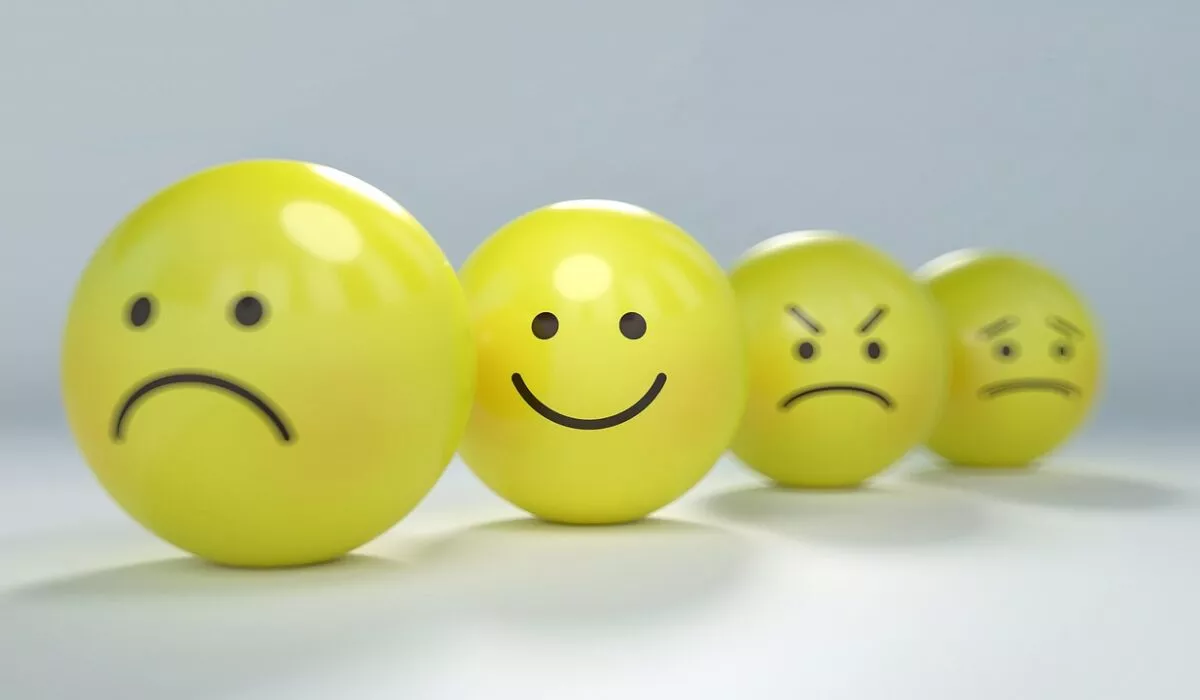Thinking
Have you ever wondered why our mood can influence how we go about our daily lives? How our mood changes the way we experience things? Whether we wake up cheery and optimistic, or melancholy and grumpy, our mood plays a key role in the way we think, feel, and perceive the world around us. But what is going on exactly inside our brains when our mood shifts?
Serotonin: the feel-good neurotransmitter
Our emotions are a series of chemical reactions within our brains, controlled by the complex cooperation of neurotransmitters and hormones. There are four main chemicals in our brains that play a significant role in our positive moods, which are serotonin, dopamine, endorphins, and oxytocin. These chemicals collectively regulate our emotions, thoughts, and behaviours. Serotonin is responsible for our feelings of happiness, wellbeing and the stability of our mood and is commonly referred to as the ‘feel-good neurotransmitter’. It is made from the essential amino acid tryptophan and is produced when you feel satisfaction or importance, and helps regulate healthy sleep patterns and appetite. This neurotransmitter is found in several parts of the body, including your digestive system, blood platelets, and throughout the central nervous system. Levels of serotonin can be increased by eating nutritious meals, getting more sunlight, taking certain supplements, getting more exercise, and lowering your stress level. High or low levels of serotonin can lead to health problems; therefore, it is important to have the right amount of serotonin in our bodies.
Dopamine: the pleasure and reward molecule
Dopamine is produced by a part of the brain called the hypothalamus, that helps you feel pleasure. Our nervous system uses dopamine to send messages between nerve cells, therefore it is a neurotransmitter. When you experience something enjoyable, such as eating a nice meal or achieving a goal, your brain releases dopamine. This reward mechanism reinforces positive behaviours and emotions. It is an important part of our reward system as it is responsible for allowing you to feel pleasure, satisfaction and motivation. Some easy, natural ways to release dopamine include meditation, listening to music, eating protein, exercising, going out in the sun and getting enough sleep.
What are the differences between dopamine and serotonin?
One of the differences between dopamine and serotonin are that dopamine is mainly found in your brain, whereas serotonin is predominantly found in your gut. Additionally, dopamine affects motivation and pleasure and makes you feel more alert, whereas serotonin stabilizes mood and anxiety, and helps to regulate sleep.

Endorphins: the body’s natural painkillers
Endorphins are opioid peptides produced by the hypothalamus and pituitary glands that act as neurotransmitters. They are often referred to as the body’s natural painkillers as they are released when your body feels pain or stress. When you feel pain, nerves in your body send pain signals to your brain. Your brain releases the neurotransmitter endorphins to block the nerve cells that receive the pain signals. This essentially turns off your pain. Endorphins are important as they help you to function even in painful or stressful situations.
Endorphins are often related to exercise, as the more you exercise, the more endorphins are released in your body. Therefore, the most effective way to emit endorphins is any form of exercise from powerwalking to hiking up a mountain. Some other methods you can use to release endorphins include eating dark chocolate, acupuncture, meditation, listening to music, watching television, laughing, and meditation.
What are the differences between endorphins and dopamine?
Endorphins and dopamine are both chemicals in the body that are responsible for making you feel happy, however they function in different ways. Endorphins relieve pain naturally. In the process of doing so, they attach to your brain’s reward centres (opiate receptors), causing dopamine to be released. For instance, when an athlete is running, endorphins will help to soothe the runner’s aching muscles. Dopamine will then be released, generating a runner’s high to keep the athlete motivated, as dopamine motivates you to do something repeatedly. Endorphins and dopamine work together and are closely linked with high endorphin levels boosting dopamine production.
Oxytocin: the love hormone
Oxytocin is a hormone that is, similarly to dopamine, produced in the hypothalamus and released into the bloodstream by the pituitary gland. Its main function is to facilitate childbirth, which is one of the reasons it is called the ‘love drug’ or ‘love hormone’. It plays a crucial role after childbirth as it promotes lactation by causing contractions of the myoepithelial cells in the alveolar ducts of your breasts. These contractions move milk through your breast tissue.
It also acts as a chemical messenger in your brain and has an important role in many human behaviours and social interactions such as recognition and trust. Oxytocin is one of the only hormones that has a positive feedback loop. This means that the release of oxytocin causes actions that stimulate your pituitary gland to release even more of it.
Our brains are remarkable chemical factories, constantly producing neurotransmitters that influence our mood and emotions. The complex interactions between serotonin, dopamine, endorphins, and other neurotransmitters shape and change our emotional experiences. Recognizing this connection allows us to develop effective strategies for managing and improving our mood, whether through medication, therapy, or lifestyle adjustments. By understanding the relationship between between brain chemistry and mood, we can take proactive steps towards better mental and emotional health.
By Misha, NLCS Student
This article was taken from the latest edition of Spectrum Magazine which you can read here.


